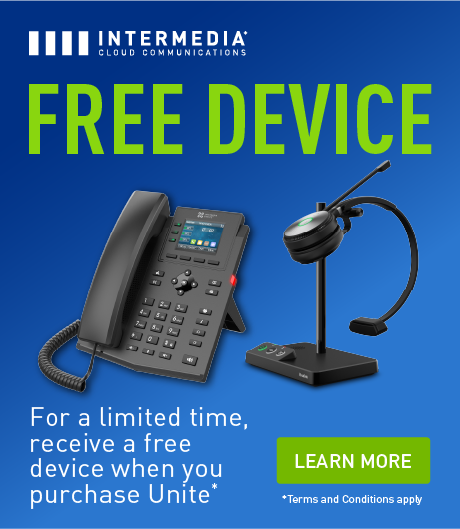As a business grows, the importance of a seamless communication strategy grows along with it. If you are in a leadership position, your customers, vendors, stakeholders, and team members depend on your ability to share information and get ideas to the people who need to hear them.
It’s also up to you to connect your employees and find ways they can do their jobs more efficiently. The days when simple email correspondence was good enough are gone. Today, communication channels need to be faster, more agile, and tailored to the job.
Key Takeaways
- Seamless communication is essential in the modern business world.
- Set goals to clarify which communication problems you need to solve.
- Understand which products and services best serve your users.
- Choose the right technology to reach your goals.
- Partner with a reliable company that excels in seamless communication strategies.
A Focused Approach for Seamless Communication
There are a wide range of options out there, and all kinds of technology intended to improve communication in a business setting. But where do you start, and how do you choose the best products for your needs?
In this article, you’ll learn about the three best practices for seamless communication in the workplace.
1. Establish Your Goals
Whether you are trying to move past current issues or planning for the future, you probably have some vision of the communication system you’d like to implement. Now is the time to fine-tune that vision and make your goals crystal clear.
Error, group does not exist! Check your syntax! (ID: 03)Think about the problems your organization is facing, both internal and external. Make a list and order it by importance.
Many managers use the SMART framework to help with this process, meaning goals should be specific, measurable, actionable, relevant, and time bound.
For example, you may have a problem getting your key personnel together for meetings on a weekly basis. Because of travel and other responsibilities, hey aren’t communicating, they aren’t working together, and this cascades into other problems across your business.
Here, your goal may be to raise attendance at staff meetings from 55% to 90% by the end of the quarter. One solution is to implement video conferencing instead of face-to-face meetings.
In these virtual meetings, employees can discuss ideas, share documents, and stay up-to-date on projects and company business.
Using this approach, you can identify your challenges and set the appropriate goals to eliminate them. Whatever your problem, there is likely a product or service that can help.

2. Understand Your Users
Now that you have a solid idea of what you want to accomplish, it’s time to put some thought into who needs to be involved. Seamless communication solutions are crucial for some members of your organization, but not everyone.
For example, your customer service personnel will benefit from a powerful contact center solution, but may only require basic email for interoffice communication. Or, you might decide it is important for them to have access to team chat software. Knowing your people and their needs is essential.
It is also important to consider how any outward-facing processes might affect your customers. A Verizon study found that, while acceptance of AI machine technology is growing, most customers still prefer some form of real human interaction when communicating with companies. However, 78% are in favor of blended communication involving both human and machine interaction.
So, what counts as a real interaction with a person in an online environment? According to people in the Verizon study:
- 55% Said real-time chat with a human
- 43% Said audio conversation with a human
- 26% Said video conversation with a human
- 18% Said interaction with a chatbot based on accurate information about the customer
- 18% Said automated voice interaction based on accurate information about the customer
This is important information to consider, and studies such as this are the key to understanding what customers expect out of a business. You can glean more specific information from your own analytics and research.
Or you can simply ask your customers how they prefer to communicate.
Successful combinations of humans and technology

3. Choose the Right Products and Technology
You know what you need to accomplish, who needs to be involved, and how you need to interact with them. Now it’s time to decide which products and services will help you achieve your goals.
There is a lot out there. Here are a few of the most popular options:
Team Chat
Chat software allows your employee and team members to communicate in real time without having to pick up a phone. It is faster and more elegant than email, but still allows message recipients time to respond when business permits. Team chat software is ideal for settings like call centers, where large numbers of busy employees may need to exchange information with each other.
Business SMS
Business text messaging allows seamless communication between your company and your customers. It is ideal for keeping people up-to-date with your products and services, presenting special offers, and providing updates on orders and other interactions. Text messaging will benefit both your marketing department and your customer service personnel.
Video Conferencing
Face-to-face meetings are still valuable in the business world, but not always practical. Bringing team members, customers, and stakeholders together can be tough. Video conferencing allows busy people to meet and share information wherever they have an internet connection, and recording features allow key personnel to view meetings after they happen.
Contact Centers
The contact center is the backbone of many businesses. Quality customer service can make or break a company, and giving your people the right tools for the job is important. That doesn’t only mean answering customer inquiries in a timely manner. It also means having the right software in place to provide your customers with the best possible experience when they reach out to your organization.
Seamless Communication Is Essential
When done right, digital communication technology can improve customer service, raise employee efficiency, and streamline your business. Get it wrong, and you may waste time and money on systems that don’t help you achieve your goals.
Be sure to consider things like security and reliability in your seamless communication strategy. And, as with anything related to your business, the most important thing is to find and partner with the right company. Contact Intermedia to get started today.
August 29, 2024
Explore other posts on these topics: Unified Communications





